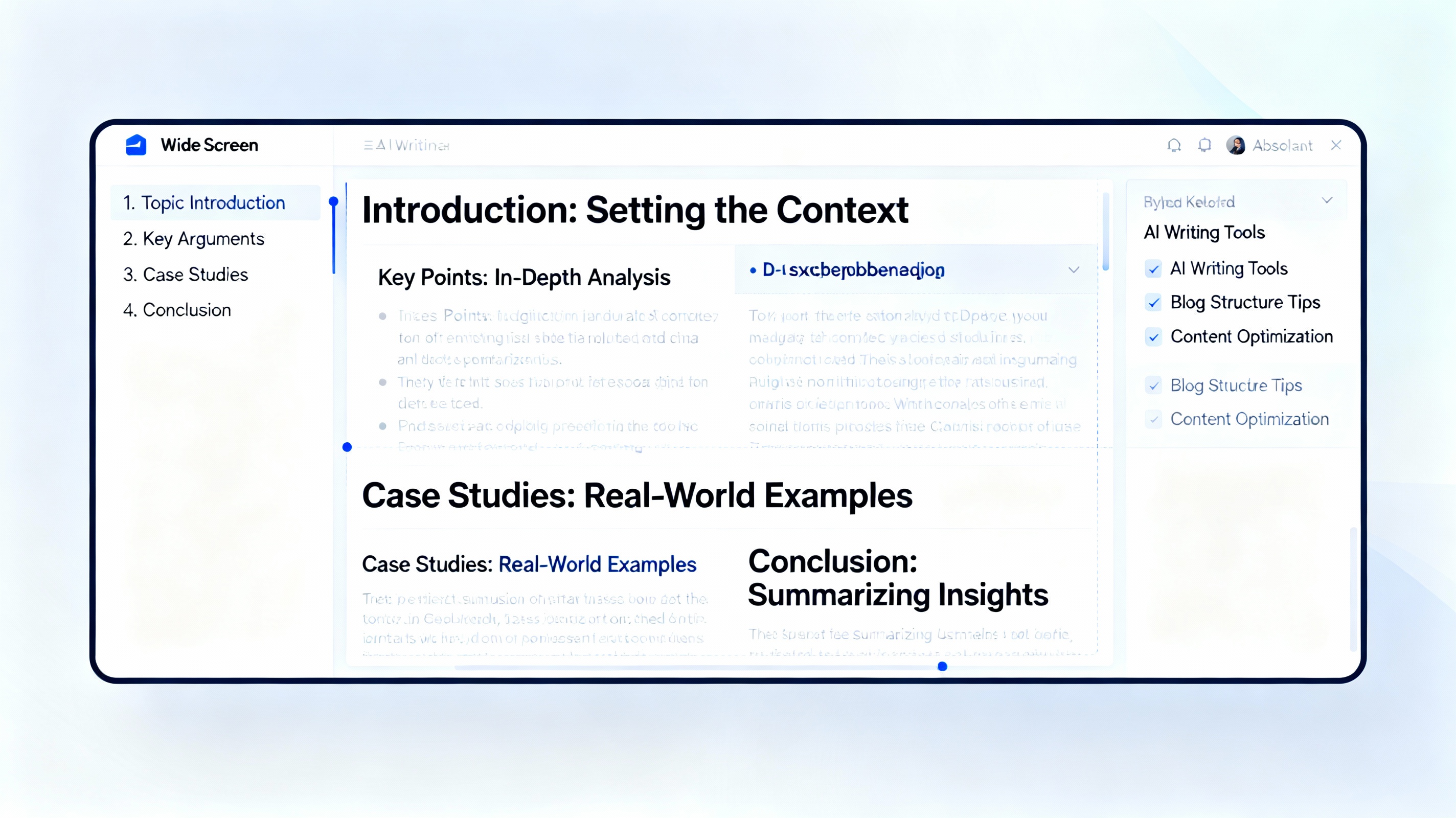
To effectively articulate bullet points for writing a blog with AI, start by using AI to distill your ideas into clear, concise statements, then expand each point into comprehensive paragraphs for your blog. Well-crafted bullet points serve as the foundation for a structured, readable, and engaging article, allowing AI tools to accelerate the content creation process without sacrificing clarity or value.
The Role of Bullet Points in AI Blog Writing
- Bullet points clarify and condense ideas: They break down complex information into digestible pieces, making the blog’s structure easier for both readers and AI tools to navigate[1][3].
- AI understands structure: AI writing assistants and generators excel at processing structured content, like bullet points and lists, and can develop these into detailed sections for your article[2][6].
- Efficiency and speed: Leveraging AI allows writers to quickly move from ideas to outlines and from outlines to full blog posts, reducing the time spent on manual drafting and organization[4][12].
Step-by-Step Process for Articulating Bullet Points to Write a Blog with AI
- Brainstorm and List Main Ideas
- Quickly jot down your core topic ideas, arguments, or insights as bullet points[4].
- Focus on the essential themes you want to cover, such as key challenges, solutions, or unique perspectives relevant to your topic[3][4].
- Refine Bullet Points for Clarity and Impact
- Ensure each bullet point captures one specific idea or argument.
- Use action-oriented language and keep each point concise to guide the AI in expanding them effectively[5][7].
- Leverage AI Bullet Point Tools
- Input your bullet points into an AI bullet point-to-paragraph converter to generate draft paragraphs[11][9].
- Alternatively, use AI-powered blog outline tools: enter your main topic, let the tool suggest sub-points, and edit as needed for completeness and flow[4][6].
- Some popular tools include Mailmodo, Typli.ai, and GravityWrite, which specialize in bullet point extraction and expansion[3][4][7].
- Expand Bullet Points into Blog Sections
- For each bullet, prompt the AI to elaborate with details, examples, stories, or supporting data.
- Guide the AI by specifying the tone, style, and depth required for your audience (e.g., “Write at an 8th-grade reading level” or “Include practical examples”)[10][4].
- Review and Edit Output
- Go through the AI-generated content to ensure accuracy, coherence, and alignment with your intended message.
- Merge, split, or reorganize paragraphs as needed. Add human insights, counter-arguments, or real-world data to increase originality and value[4][16][12].
- Optimize for Readability and SEO
- Use the AI to further refine headings, summary lists, and calls to action.
- Ensure bullet points and expanded sections incorporate relevant keywords and answer common reader questions for better SEO performance[4][8].
Best Practices for Articulating Effective Bullet Points
- Be specific: Each bullet should cover only one idea, making it easier for AI to elaborate.
- Use clear, simple language: Both the AI and your readers benefit from direct and unambiguous statements[1][3].
- Prioritize ideas: Organize bullets logically, from most to least important, or group by subtopic for better flow[4].
- Include unique insights: Add personal or contrarian points to differentiate your blog from generic AI-generated text[4][16].
Example Workflow
- Outline your main arguments as bullet points.
- Input these into an AI tool (like Mailmodo or Typli.ai) to generate structured paragraphs.
- Edit and expand the AI content, injecting your expertise or further research.
- Finalize with a summary and a clear call-to-action based on your bullet framework.
By following this approach, you create a streamlined and repeatable process for writing high-quality, AI-assisted blogs that start with strong bullet points and end with informative, reader-friendly articles[3][4][12].
No comments:
Post a Comment